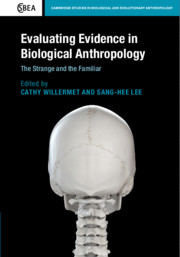Book contents
Part I - The Strange and the Familiar
New Landscapes and Theoretical Approaches
Published online by Cambridge University Press: 01 November 2019
Summary

- Type
- Chapter
- Information
- Evaluating Evidence in Biological AnthropologyThe Strange and the Familiar, pp. 9 - 100Publisher: Cambridge University PressPrint publication year: 2019



